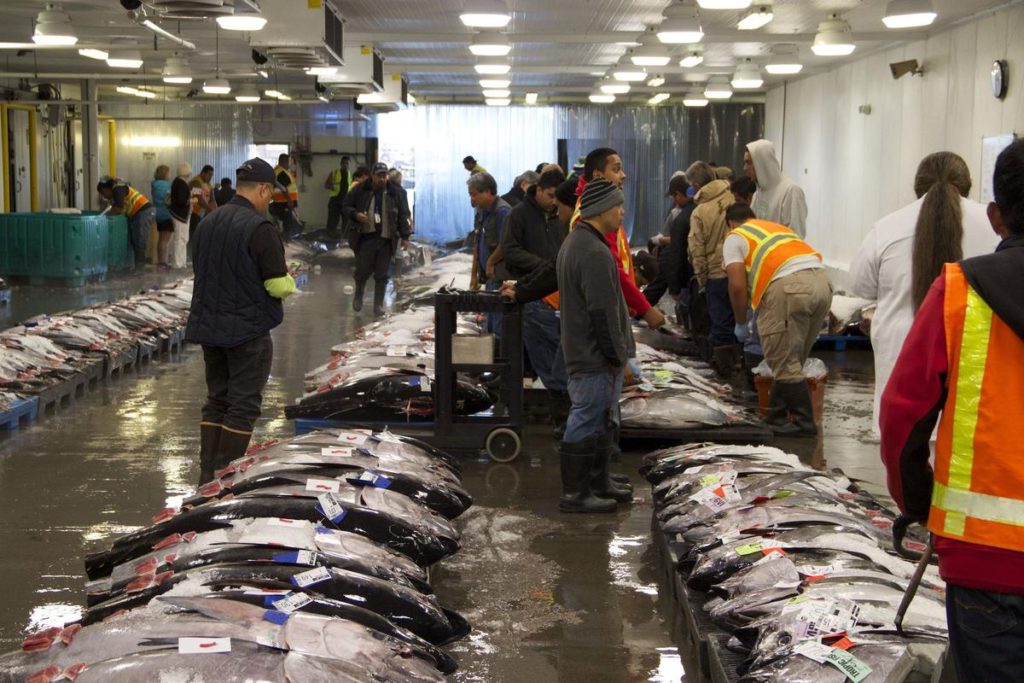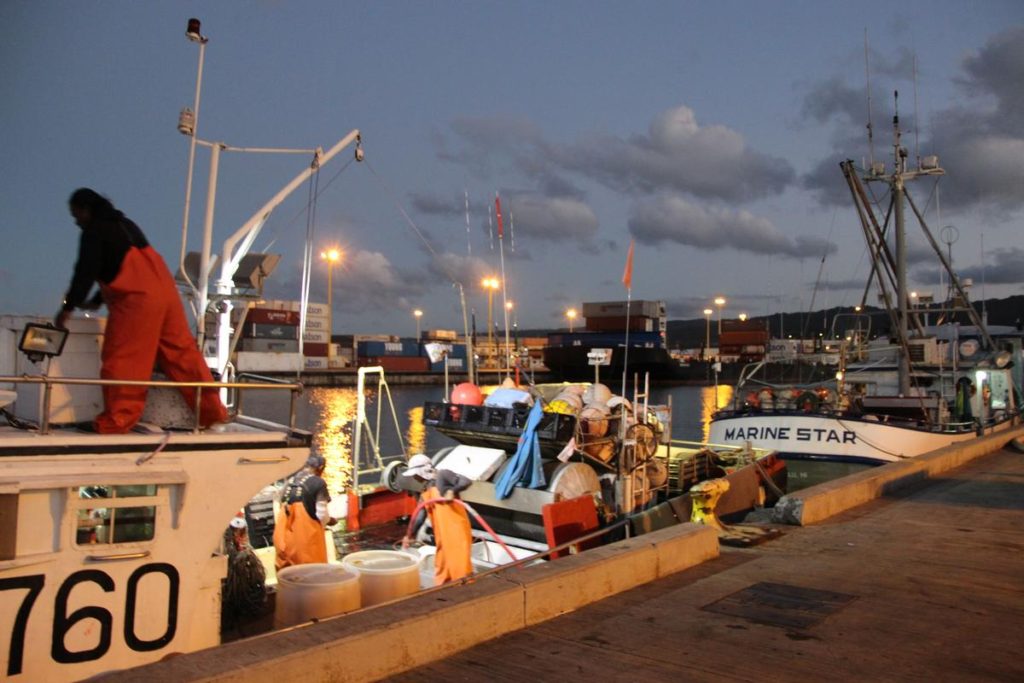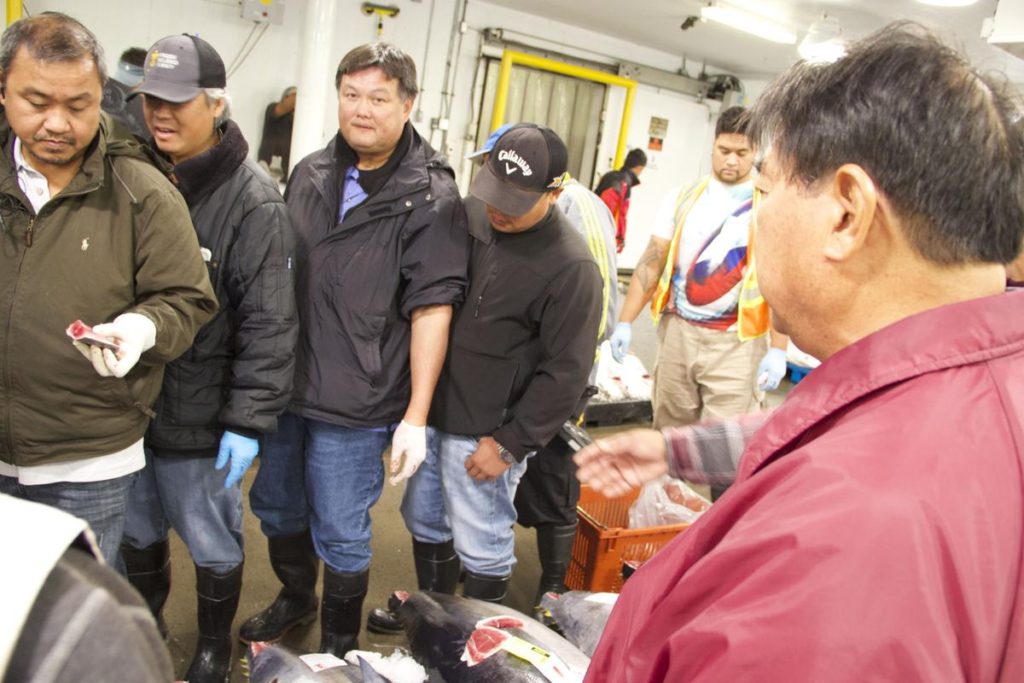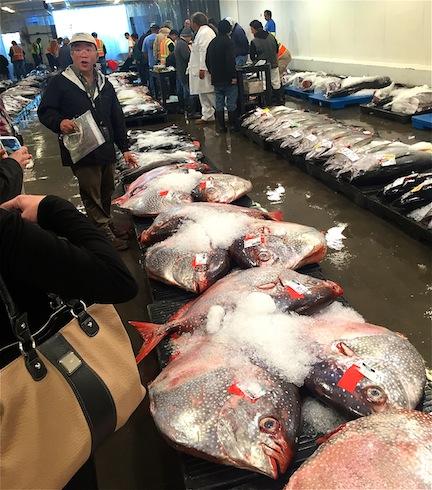
In the heart of Honolulu Harbor, directly across from the container port, there’s a large, utilitarian, metal building adjacent to the docks at Pier 38 where the long line Tuna boats tie up.
LISTEN TO THE EXPERIENCE OF THE FISH AUCTION HOUSE with Dr. John Kaneko NPR Podcast

It’s five a.m., and we’re waiting outside for the 5:30 bell that announces the commencement of United Fishing Agency’s daily wholesale auction— it’s the only one of its kind between Tokyo and the East Coast.
Buyers from fish markets, restaurants and distributors arrive in their oversized pick-ups.
They chew the fat out in the parking lot and then start to amble in They’re clad in bulky jackets, parkas, and hooded sweatshirts, which seems a bit strange, since it’s a balmy 71 degrees outside and the sun hasn’t even risen yet.
The disconnect is quickly solved when it’s our turn to head inside, where it’s as cold as a winter day in Anchorage.
While we wait for the bell to ring, we dodge frenetic forklifts shuttling iced crates bulging with freshly unloaded Big Eye Tuna, Swordfish, Wahoo, Marlin, Albacore and much more.

We are queued up next to a three-star Naval Admiral and his associates who have come for first hand tour of the facility that falls under NOAA’s jurisdiction. Dr. John Kaneko, Program Manager with the non-profit Hawaii Seafood steps up and introduces himself and invites us inside for a tour and to watch the auction.
The Honolulu Fish Auction at Pier 38 offers a 90-minute educational tour, open to the public.
 Pre-registration on the www.hawaii-seafood.org website is required. There is a fee of $25/adults and $20/children.
Pre-registration on the www.hawaii-seafood.org website is required. There is a fee of $25/adults and $20/children.
Dr. Kaneko explained, “The tour was created to offer visitors a first-hand exposure to Hawaii’s commercial fishery and seafood industry, and gain new perspective on what it takes to catch the fish and to study, monitor and manage the fishery for sustainability.
The tour fees help the Hawaii Seafood Council (501c3 non-profit organization) provide out-of-class room learning experience for our culinary arts and marine biology/oceanography students.”